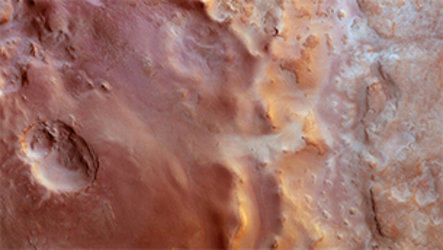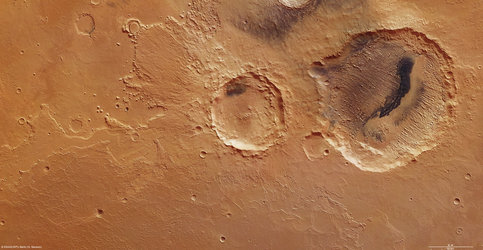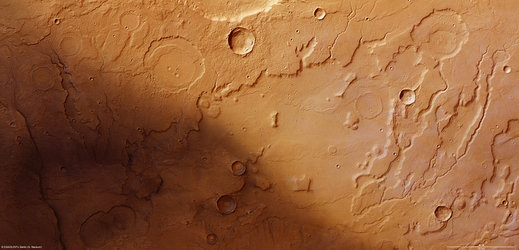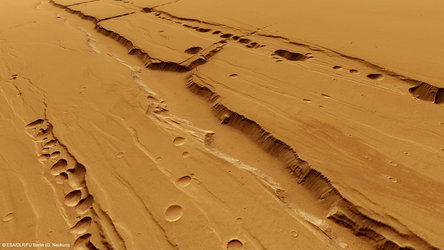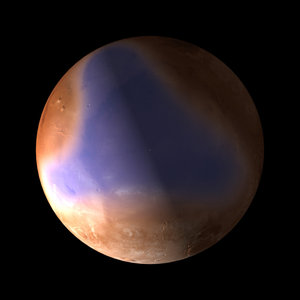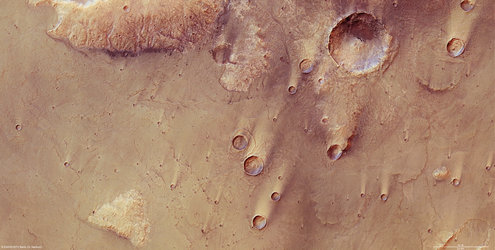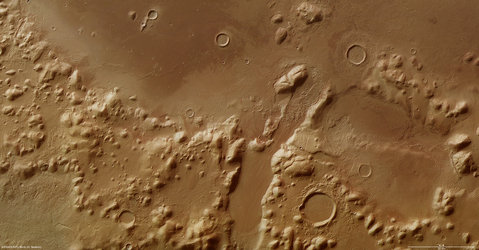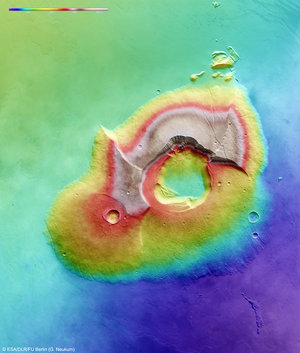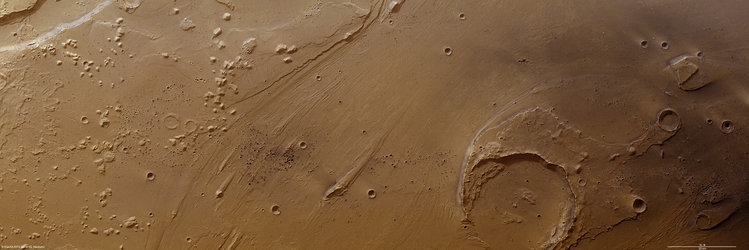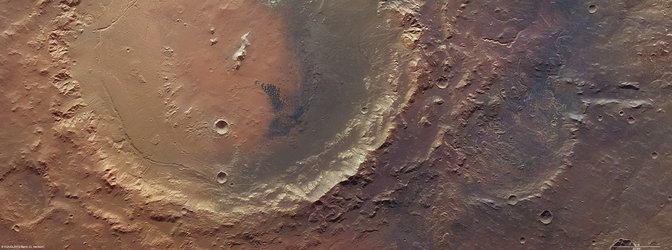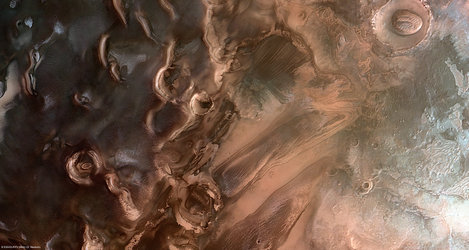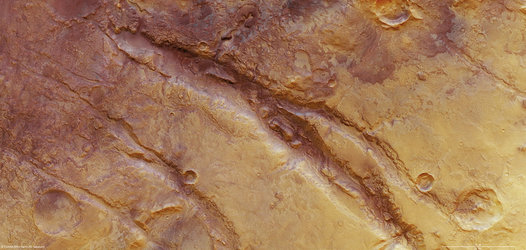Signs of ancient flowing water on Mars
ESA’s Mars Express has returned images of a region on the Red Planet that appears to have been sculpted in part by flowing liquid. This again adds to the growing evidence that Mars had large volumes of water on its surface in the distant past.
On 21 June last year, Mars Express pointed its high-resolution stereo camera at the western part of Acidalia Planitia, a gigantic basin in the planet’s northern lowlands, at the interface with Tempe Terra, an older, higher terrain.
Acidalia Planitia is a region so vast that it can be seen from Earth by amateur astronomers.
The famous observer Giovanni Schiaparelli named this large dark feature on his map of Mars after the mythical Acidalian (or Venusian) fountain in Boeotia, where the three graces of ancient Greek myth bathed.

The images taken cover part of the western edge of the region, where some of the numerous valleys descending from Tempe Terra show subtle evidence for ‘dendritic’ drainage patterns emanating from them.
The word dendritic comes from the Greek for tree and the channels in the images are believed to have been formed by the surface run-off of flowing water from rain or melting snow during some distant martian epoch.
The presence of deep valleys, with very few tributaries in the form of smaller valleys further downstream, shows that the region itself probably formed by a process called ‘sapping’ or ‘undermining’, which occurs when erosion along the base of a cliff wears away softer layers of material.

Sapping removes support for the upper harder rock which breaks off into large blocks, and falls from the cliff face.
This way, deep valleys can erode progressively upwards, as can be seen in the Colorado Plateau on Earth.
The lower-left part of the image appears to be in shadow, but this darkening is in fact is due to differences in surface material: the left-hand side is covered with dark sand, probably of volcanic origin, while the right side is covered with brighter dust.
The images also show faults in the martian crust, extending towards the Idaeus Fossae region. They are believed to have played a vital role in releasing water by exposing subsurface reservoirs, possibly forming lakes in nearby craters.
Apparent sediments covering the floors of some of the older, more eroded craters are of particular interest for scientists, as they again point to the existence of surface water at some stage.
In some cases, valleys start at the rim of the craters, suggesting that water was released from them into the surrounding terrain.
Some newer craters are seen in the central areas of the image. Their relatively young age is demonstrated by the lack of erosion and the fact that they lie on top of older features.

These Mars Express images give scientists yet more evidence of a watery past for the Red Planet, and will help them to decode how the water ebbed, flowed and eroded the surface at different times.















 Germany
Germany
 Austria
Austria
 Belgium
Belgium
 Denmark
Denmark
 Spain
Spain
 Estonia
Estonia
 Finland
Finland
 France
France
 Greece
Greece
 Hungary
Hungary
 Ireland
Ireland
 Italy
Italy
 Luxembourg
Luxembourg
 Norway
Norway
 The Netherlands
The Netherlands
 Poland
Poland
 Portugal
Portugal
 Czechia
Czechia
 Romania
Romania
 United Kingdom
United Kingdom
 Slovenia
Slovenia
 Sweden
Sweden
 Switzerland
Switzerland




























